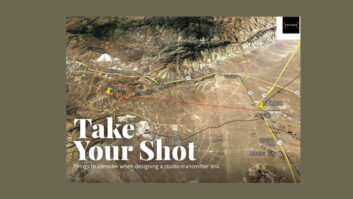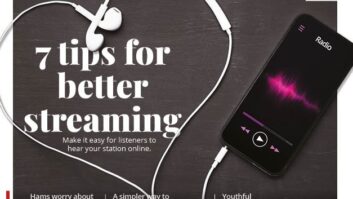The author is chairman of Digital Radio Mondiale.
LONDON — Everything seems to be digital nowadays.
Digital used to mean something technical, even mysterious, which in the case of radio took the analog audio and turned it, through compression, into something much better, accompanied by other services, like images, internet content, and video.
Nowadays though, we are told that “digital” is not just technology, or even a medium or platform but the very marketplace dominating our lives. If you happen to still be in analog or traditional media and not in the digital bazaar, you are doomed and you must abandon “the increasingly compromised,” tried and tested FM or AM —just take a look at the shortwave switch off announced by ABC in Australia, which may raise at least some eyebrows.
The fuzzy digital label gets assimilated and perhaps rightly so to online or IP. A recent United States study published by Edison Research and Triton found that 62 percent of the U.S. population now turns to online radio. If you read the small print 87 percent of youngsters, 70 percent of middle agers and only half as many grey-haired Americans are using their (often) free internet access to listen to AM/FM radio stations or audio content that is being streamed online. But does this make our radio digital?
In the United Kingdom 74.5 percent of the population tuned to traditional AM/FM radio in 2016’s final quarter, a small increase on the previous months, while listening via digital options decreased a bit.
Digital listening options include the internet and digital television, though their share is very small, as any detailed statistic will show that listening via apps, TV and through podcasting barely raises over 10 percent.
This does not invalidate them as radio enhancements or enrichers. It just proves that the great push made by some broadcasters and media companies to replace terrestrial broadcasting with these digital enhancers is the strategists’ dream of the past.
In the U.K., digital radio is inching slowly forward but remains tantalizingly below the 50 percent bar set as a requirement by the government for serious consideration of an analog radio switch off. In total, 54.8 percent of radio listening was done via AM/FM in the last months of 2016, while 45.2 percent occurred digitally.
Out of this heap of statistics one thing emerges clearly: radio has the broadest reach of all media on a weekly basis in the U.S. and the U.K., along with probably most of countries worldwide. Let’s not forget that radio still reaches 90 percent of South Africans.
Radio is the last line of resistance in case of emergencies. Radio is being revived in the cars where it delivers location-relevant news, sports and advertising, boosting local broadcasting along the way.
With its qualities of what has been called “top-of-mind awareness,” its ubiquity, flexibility, and of course intimacy, radio must claim its deserved position in the digital marketplace but not by getting in through misnamed or — very narrow — back doors.
Digital terrestrial broadcasting beats IP any day. Because of its coverage it should be available to every citizen, whether they have a data plan or not.
Maybe digital radio started life too early and some are losing patience with its much-heralded advantages and benefits, not always carried out to their full potential. Perhaps they secretly hope that IP will soon deliver all the radio advantages without the investments required by digital radio.
If every technology goes through several stages before it reaches maturity, it is fair to say that digital radio has barely passed its growing pains.
Now that the initial hype, and exaggerated expectations have been forgotten, an increasing number of broadcasters, governments and manufacturers realize that the transition to digital radio is inevitable. They also understand that the choice of the best standard or standards to reach each citizen in a country — an obligation for many governments — with the best and most relevant content, must be taken.
When digital works fully, like we have seen with DRM recently in New Delhi, where quality audio and extra services are a reality and can be received in the headquarters of public broadcaster AIR as well as in people’s houses, then we can say digital is no long just a label. It is palpable and truly exciting.
This is where analog has finally transitioned to something better and “digital” starts to make full sense.












